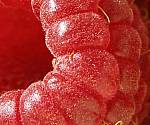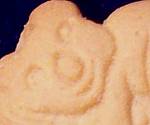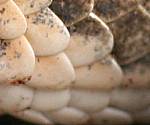Week 4
Day 1 02/28
Aim: What type of reader's notebook is acceptable?
Agenda
- Complete the test #1
- Share the book project with your partner
- Hand in the project
- Check the 2nd book
- Review the reader's notebook format
- Assign the reading task
HW#13 Prepare for the Reader's Reponse Day on Tuesday
Reader's Reponse Day- Students select their best response they have written and share with the class ( 30 seconds to a minute). Name the skill of your focus.
Day 2
Lesson 1 Making Connections
Objective: Students will learn how making connections will help them to understand and comprehend the text.
Aim: How do I make and explore personal connections to characters, conflicts, or themes in a text?
Skill/Concept: Making Connections
Material: Mentor Text - The Color of Water, A Black Man’s Tribute to his White Mother by James McBride
Agenda
Do Now:
Acquisition: Making Connections
Mini Lesson –
There are three main types of connections that we make while reading texts.
- Text-to-text connections: This reminds me of something else that I read....
- Text-to-self connection: This reminds me of when I....
- Text-to-world connection: This makes me think about…
Ideas From Text |
Reaction/Connection |
p.75, Helen has a big argument with her sister, because she is always wearing her clothes without asking. |
This reminds me of years ago when my sister and I had an argument, because I saw her one day with my favorite jacket on.
(text-to-self) |
p. 81, There were white sections of Suffolk, like the Riverview section, where Jews weren’t allowed to own property. |
This reminds me of what Jews had to deal with when the Nazis took over Germany.(text-to-world) |
Text to Self helps me think of an experience in my own life
Focusing on text-to-self connections:
- What does this story remind you of?
- Can you relate to the characters in the story?
- Does anything in this story remind you of anything in your own life?
Text to Text helps me relate to other texts I’ve read
Focusing on text-to-text connections:
- What does this remind you of in another book you have read?
- How is this text similar to other things you have read?
- How is this text different from other things you have read?
Text to World helps me relate to current events or big ideas/controversial issues
Focusing on text-to-world connections:
- What does this remind you of in the real world?
- How are events in this story similar to things that happen in the real world?
- How are events in this story different from things that happen in the real world?
Meaning Making: While reading your book take notes and identify whether you are making a text to text, text to self, or text to work connection.
Transfer: Write a one page response using your post-it notes, identifying which type of connection you are making to the book you are reading? Make sure you explain your connection in detail.
HW#14: Read for 30 minutes. Finish your response.
Day 3
Lesson 2 Making Inferences
Objective: Students understand how to make inferences (that is, what evidence and prior knowledge prompted them to come to that inference). Students will be able to make inferences using text.
Aim: How do I make inferences in my everyday life?
How does making inferences help me better understand the text ?
Skill/Concept: Making Inferences
Materials: Mentor Text - Down These Mean Streets by Piri Thomas
Making Inference Chart
Agenda
Do Now:
Acquisition – Making Inferences
Mini Lesson:Making Inferences - Usually referred to as "reading between the lines." Making inferences helps the reader think about the text they read on a deeper level. Authors don’t directly state all the details in a story. Sometimes readers need to fill in some gaps. Good readers use clues from the text and their own knowledge to make connections, elaborate on story details, and figure out what the author is trying to say. This is called making inferences.
Basically, an inference is when we combine evidence with what we know to come to a conclusion.
This strategy usually involves:
- Forming a best guess using evidence -- context clues, picture clues, etc.
- Making predictions
- Drawing conclusions
- Finding meaning of unknown words
Making Inference Chart: Identify ways we infer everyday and how we come up with those inferences.
Making Inferences Chart : Click http://www.whatsfordinner.net/Mystery.html#rec
Photos |
Evidence
(what you see, hear, read, etc) |
Schema
(prior knowledge or experience related to the evidence) |
Inference
(Your conclusion after combining the evidence and scheme) |

|
|
|
|

|
|
|
|

|
|
|
|
Sentences |
Evidence
(what you see, hear, read, etc) |
Schema
(prior knowledge or experience related to the evidence) |
Inference
(Your conclusion after combining the evidence and scheme) |
Rasheeta was the star pitcher, but she had a broken finger. |
|
|
|
I forgot to set my alarm clock last night |
|
|
|
When I woke up, there were branches and leaves all over the yard.
|
|
|
|
http://www.whatsfordinner.net/Mystery.html#rec
Inferring from a Text
Mentor Text: “We scrambled out through the back window, slid down the drainpipe, and cut out. Louie had dropped the cigarettes, and I had left the cash drawer open.”
What can we inference from this passage?
Infer the meaning of scramble using context clues.
Predictions vs. Inferences: One easy way to remember the difference is that predictions are always about the future, while inferences refer to “right now.”
Meaning Making: While reading your book take notes on how the inferences they made affect your understanding of the book and/or characters.
Transfer:
HW#15: Read for 30 minutes. Finish writing your one page response on how making inferences while you are reading your book helped you better understand your book/character.
Day 4 03/3 The Central Idea
Objective: Students will be able read text and determine which sentences are the central idea and supporting details.
Aim: How do I determine what is important in the text?
Skill/Concept: central idea
Material: Mentor Text – Down These Mean Streets by Piri Thomas
Agenda
Do Now:
Acquisition: The Central Idea
Mini Lesson – Identifying central idea and supporting details is an important part of reading comprehension. The central idea of a piece of writing is the main point the author tries to make. This can be an opinion, argument, or a general idea. Most of the time, but not always, the main idea is stated in a topic sentence. This sentence is usually near the beginning and sets up what the rest of the writing will be about. Supporting details are sentences that support the central idea. These sentences have information that helps explain and prove the author’s point.
Material: Mentor Text – Down These Mean Streets by Piri Thomas
Agenda
Do Now: My Favorite Quotation Day- Copy your favorite line from your book in your notebook. Explain why you chose this sentence and how it gives audience the insight into the book you are reading.
Describe the meaning of a central idea. Write a few sentences to describe the central idea of your book.
Acquisition: The Central Idea
Mini Lesson – Identifying central idea and supporting details is an important part of reading comprehension. The central idea of a piece of writing is the main point the author tries to make. This can be an opinion, argument, or a general idea. Most of the time, but not always, the main idea is stated in a topic sentence. This sentence is usually near the beginning and sets up what the rest of the writing will be about. Supporting details are sentences that support the central idea. These sentences have information that helps explain and prove the author’s point.
Parts of a Paragraph
- A Topic: Identifies who or what the reading is about
- A Central Idea: The most important point the author is making about the topic. It is often stated in the topic sentence.
- Supporting Details (evidence): The specific ideas to develop, explain, or support the central idea.
Central Idea
rollercosters move in different ways
|



loop upside
down |
twist and turn |
rise high
and drop |
Central Ideas can be…
1.Explicit (stated): An explicit central idea is a sentence found in the reading passage, which states the topic and the main point or points being made about that topic. This sentence is referred to as the topic sentence.
2. Implicit (implied): An implicit central idea mean that the author has chosen not to use a statement in the selection or passage to tell the reader the topic and central idea. The reader must read the passage and determine the central idea from the information/details that are presented. The reader is responsible for composing a statement of the main idea. No topic sentence exists.
Central Idea & Details Sheet:
Mentor Text: Hanging around on the block is a sort of science. You have a lot to do and a lot of nothing to do. In the winter there’s dancing, pad combing, movies, and the like. But summer is really the kick. All the blocks are alive, like many-legged cats crawling with fleas. People are all over the place. Stoops are occupied like bleacher sections at a game, and beer flows like there’s nothing else to drink. The block musicians pound out gone beats on tin cans and conga drums and bongos. And kids are playing all over the place—on fire escapes, under cars, over cars in alleys, back yards, hallways.
We rolled marbles along the gutter edge, trying to crack them against the enemy marbles, betting five and ten marbles on being able to span the rolled distance between your marbles and the other guy’s. We stretched to the limit skinny fingers with dirty gutter water caked between them, completely oblivious to the islands of dog filth, people filth, and street filth that lined the gutter.
Guiding Question:
- What is the topic of this passage? (Central Idea)
- What are the points made about this topic? (Supporting Details/Evidence)
- What point is the writer trying to prove or make?
- Does that statement represent the most important thing the writer is saying about the topic?
Meaning Making: Read your book for five minutes and response (answer one question only) using the following guiding questions:
- List the supporting details of the passage that helps prove the author’s central idea?
- What is the central idea of the passage?
- Explain in your own words the central idea of the passage?
- What is the author/writer trying to say? (Message or moral) Provide information from the text to support your conclusion.
Exit Slip (Transfer): Find a short passage from your book, and explain the central idea. Do you agree, disagree, or have an opinion about the topic?
HW#16: Read for 30 minutes. Find a short passage from your book, copy it and explain, in your own words, what is the author trying to say (central idea)? Please provide supporting details.
Day 5 03/04/2011 Assessment#2
Objective: Students will demonstrate (a)the notetaking skills and their knowledge of Reader's Notebook; (b) understanding of the concept of "central idea" and its supporting details
E2 Assessment#2 Ms. D’Amato 03/04/’11
Title___________________________ by Author____________________Page#______
Setting ________________________________
Main Character(s)_______________________
Skill: Central Idea & Reader’s Notebook
Task: Read for 15 minutes and while reading, use post-its to jot down information that will help you identify the central idea and it supporting details.
Part I: Use one sentence to describe the central idea of the section you will have read from your 2nd book.
Central Idea_______________________________________________________
Part II: List 5 supporting details to support your central idea.
Detail #1________________________________________________________________
Detail #2________________________________________________________________
________________________________________________________________________
Detail #3________________________________________________________________
________________________________________________________________________
Detail #4________________________________________________________________
________________________________________________________________________
Detail #5________________________________________________________________
HW#17 Read 30 minutes and be prepared for "Author's Chair" activity by finding a paragraph that you enjoy very much for any reason. Remember to take notes whilre you are reading. Keep up the reader's notebook.


